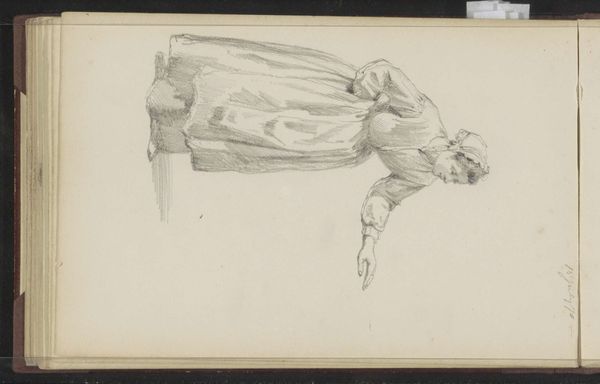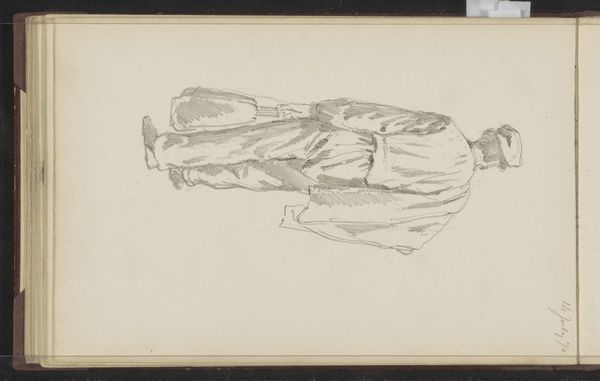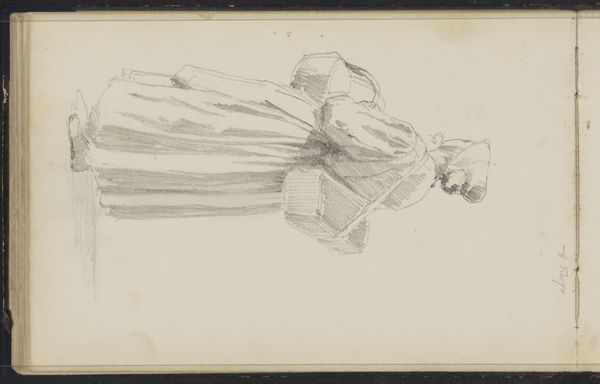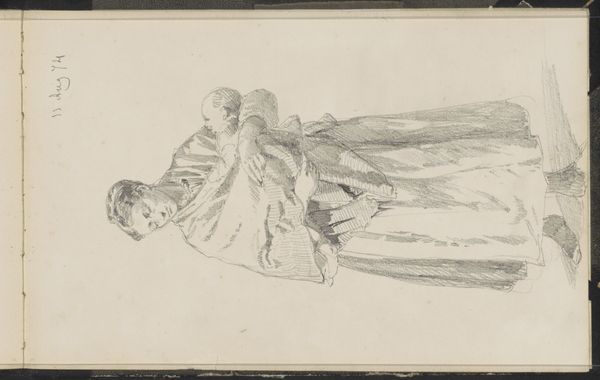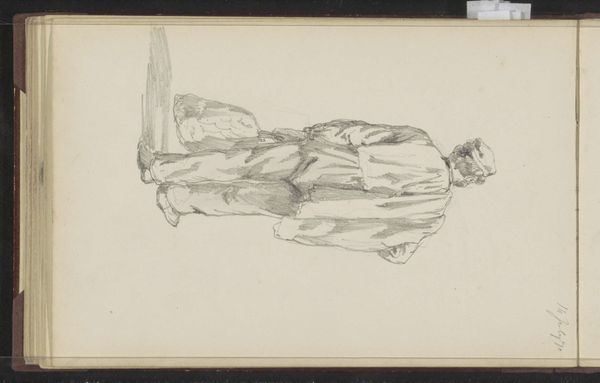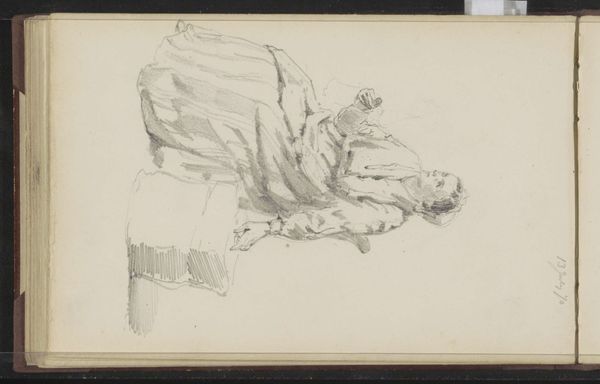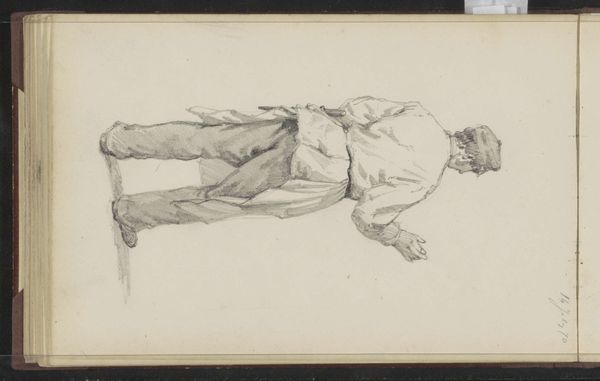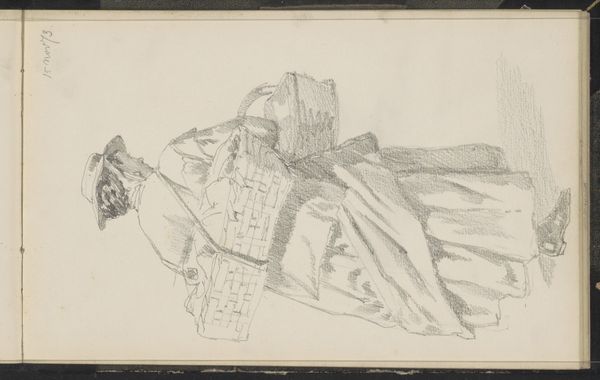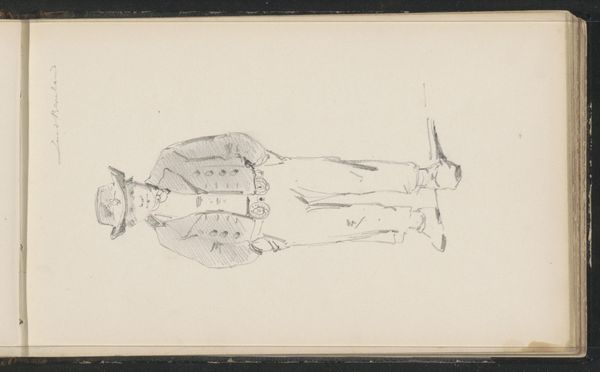
drawing, paper, pencil
#
portrait
#
drawing
#
pencil sketch
#
figuration
#
paper
#
pencil
#
sketchbook drawing
Copyright: Rijks Museum: Open Domain
Curator: Before us we have "Jonge vrouw met een mand", or "Young woman with a basket", a drawing attributed to Cornelis Springer and likely dating from the 1870s. It's part of the Rijksmuseum collection. Editor: There's an unassuming tenderness about this simple sketch. A moment captured, swiftly yet attentively rendered. It has a beautiful quietude, don't you think? Curator: Absolutely. A glimpse into everyday life, softened by the passage of time and the artist's focus. Notice the basket; what do you think it might hold? Symbolically speaking? Editor: Well, materially, it probably holds wares she is taking to market – some raw produce or handicrafts. This drawing likely gives clues to what ordinary women traded and bartered to survive. Curator: Perhaps. The woven structure could represent interconnectedness or the fruits of communal labor, both literally and figuratively. Baskets themselves often symbolize provision and nourishment. This young woman becomes an icon of the era, doesn't she? Editor: The material fact of this piece as sketchbook drawing implies it's not meant to be precious or ‘finished,’ but rather part of a process, an observation refined, which might de-mystify ideas about 'greatness'. Curator: Indeed. The seeming lack of refinement highlights something pure, unadulterated. And, because it’s found inside the pages of the sketchbook, it captures Springer's eye, which brings value even in the quotidian aspects of this young woman's experience. The weight of that is not lost, despite being created out of the ordinary pencil. Editor: Which is another consideration. The ubiquity of the pencil suggests it was part of a mobile artist's kit – a means to quickly render ideas from direct experience, connecting the finished studio work to the experience. This could point to who gets recorded. Was her labor recorded and dignified beyond this instance? Curator: A thoughtful point. The act of drawing is itself a gesture of recognition, embedding this woman and her basket within a larger historical narrative, prompting us to consider whose stories get told, then and now. Editor: I agree, the implications embedded in seemingly simple works are part of what keep us returning to study material art history. Curator: A brief, but potent portal into the past, reminding us of the power of quiet observation and the stories woven into the most humble of objects.
Comments
No comments
Be the first to comment and join the conversation on the ultimate creative platform.

